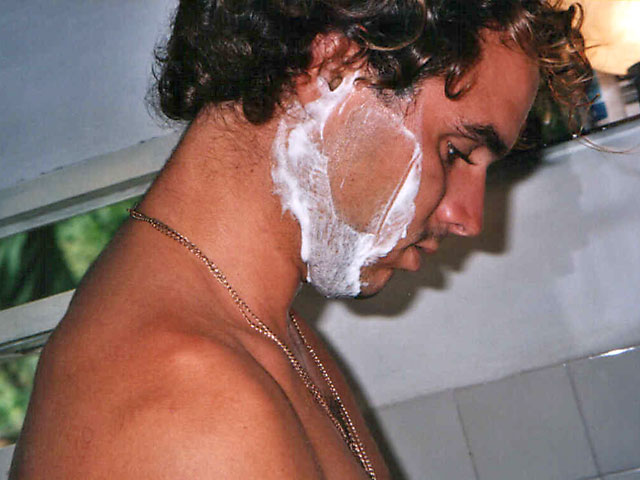How do hairs like those on the chest or in the nose know to grow when you trim them?
 Clipping hairs on the skin surface does not actually have any effect on the growth of hair, because the hair above the surface is technically dead. The hair visible on our bodies grows out of living hair follicles within the skin. These fairly complicated "miniorgans" are made up of more than 10 different cell types geared toward generating the hair fiber that reaches the surface of the skin. More than five million hair follicles populate the entire body; one million of those cover the head, with 100,000 to 150,000 residing on the scalp.
Clipping hairs on the skin surface does not actually have any effect on the growth of hair, because the hair above the surface is technically dead. The hair visible on our bodies grows out of living hair follicles within the skin. These fairly complicated "miniorgans" are made up of more than 10 different cell types geared toward generating the hair fiber that reaches the surface of the skin. More than five million hair follicles populate the entire body; one million of those cover the head, with 100,000 to 150,000 residing on the scalp.
All hair follicles go through the "hair follicle cycle," which is made up of three stages: growth, degeneration and rest--called anagen, catagen and telogen, respectively. During anagen, the rapid proliferation of cells located at the follicle's base, or bulb, results in the constant production of hair fiber through the follicle's developing shaft. At the end of anagen, the hair-producing cells begin to die, entering into the catagen stage. After regressing for a couple of weeks, the bulb rests for several weeks to months in telogen. The new lower hair follicle then regenerates from stem cells in the telogen follicle and anagen begins anew.  The old hair fiber then falls out--often while you are brushing your hair--as a new strand pushes it out the top of the follicle. Hair follicles on different parts of the body produce hairs of different lengths by staying in anagen for varying periods of time. Scalp follicles remain in anagen for many years and can produce hair fibers over one meter in length. Hair follicles on the body, which generate shorter hairs, are in anagen for only a matter of weeks or months. The hairs that appear to "know" to grow back after being trimmed just happen to be in anagen when you cut them.
The old hair fiber then falls out--often while you are brushing your hair--as a new strand pushes it out the top of the follicle. Hair follicles on different parts of the body produce hairs of different lengths by staying in anagen for varying periods of time. Scalp follicles remain in anagen for many years and can produce hair fibers over one meter in length. Hair follicles on the body, which generate shorter hairs, are in anagen for only a matter of weeks or months. The hairs that appear to "know" to grow back after being trimmed just happen to be in anagen when you cut them.
Drastic changes take place in the length of the growing stage when follicles are under the influence of testosterone. In men, during puberty, as testosterone levels increase, small hairs on the face, underarms, chest, legs, arms and pubic area turn into large hairs that remain in anagen for longer periods. (Since women don't make much testosterone, the hormone doesn't have as much of an effect on their hair follicles.) To the consternation of most men, later in life, follicles in the nose and ear become sensitive to testosterone and also enlarge, thus yielding large hairs. Paradoxically, hair follicles on the scalp of genetically predisposed men respond in the opposite manner: they miniaturize and spend less time in anagen, which leads to baldness.










|